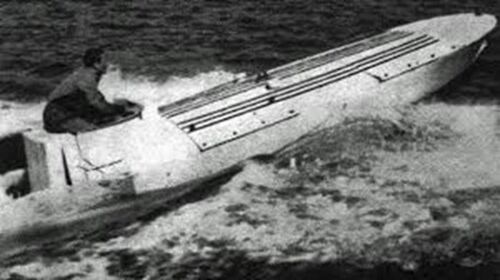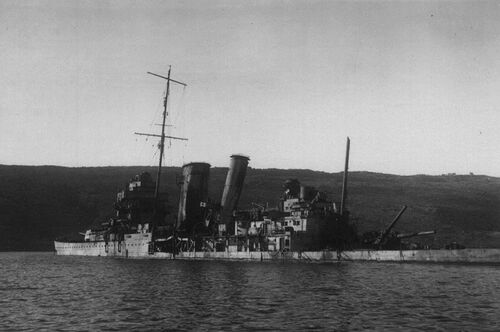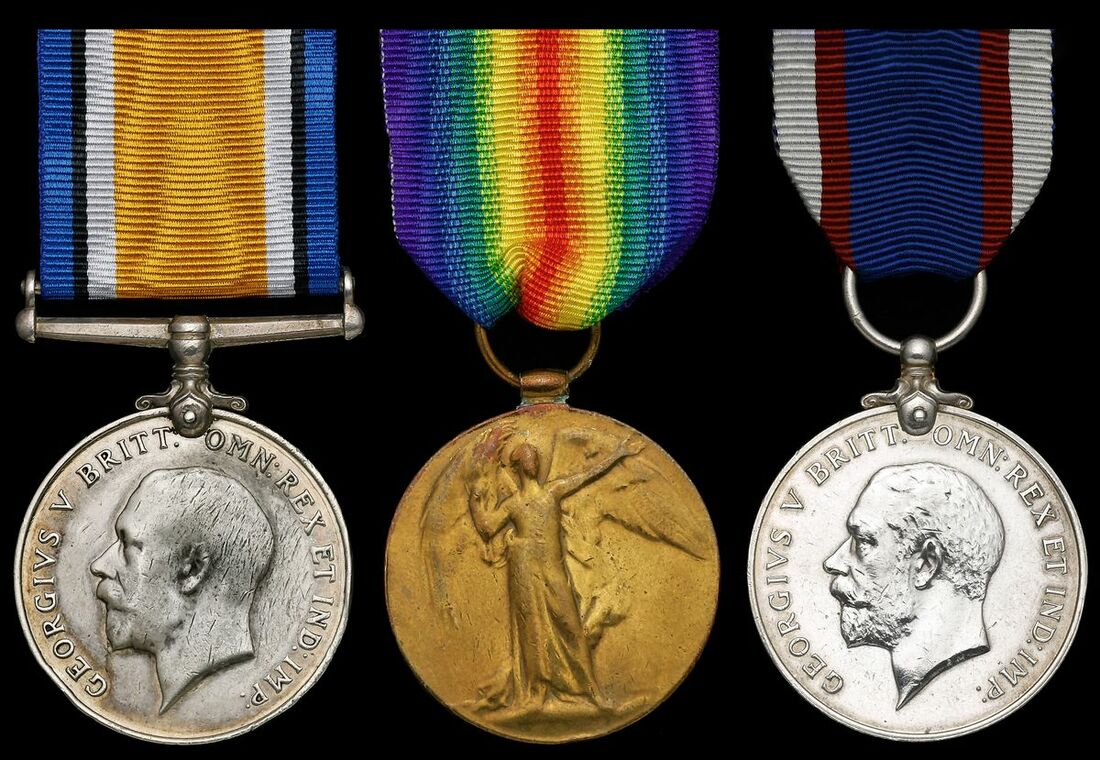Auction: 23112 - Orders, Decorations and Medals - e-Auction
Lot: 525
'Decima Flottiglia MAS (the 10th Light Flotilla), was one of the most effective units in the history of special operations … Decima MAS, as it is usually called, was composed of highly trained Italian frogmen capable of conducting long range surface or underwater operations using modified MTM (Motoscafo da Turismo Modificato) light motor torpedo boats (nicknamed barchini - "little boats"), midget submarines, and manned torpedoes to attack and sink targets.
During the Battle of the Mediterranean (June 1940-July 1943), Decima MAS participated in a dozen operations and sank or heavily damaged five major warships and 20 merchant ships totalling 130,000 tons. One such successful raid was the attack on the British heavy cruiser H.M.S. York in Suda Bay, Crete, on the pre-dawn morning of March 26, 1941 …'
An article entitled 'Decima Flottiglia MAS Sinks H.M.S. York', by Dwight Jon Zimmerman, refers; see the Defense Media Network, 11 October 2016.
A campaign and long service group of three awarded to Leading Seaman A. F. Arnall, Royal Fleet Reserve, late Royal Navy, who was mentioned in despatches for his gallant work on the Arctic run in H.M.S. Obedient in 1943-44
Earlier, he was present aboard H.M.S. York when she was targeted by Italian MTM boats in Suda Bay, Crete in March 1941
Two such boats - capable of 34 knots and packed with 660lbs. of explosives in their bows - struck York amidships on the night of 26 March 1941, the resultant explosion inflicting fatal damage. For good measure, the Luftwaffe followed up over the coming days, reducing the cruiser to a total wreck
British War and Victory Medals (J. 41504 A. F. Arnall, A.B., R.N.); Royal Fleet Reserve L.S. & G.C., G.V.R., coinage bust (J. 41504 (CH.B.20847) A. F. Arnall, L.S., R.F.R.), the first two polished, very fine (3)
Arthur Frank Arnall was born in Wandsworth, London on 9 June 1899 and entered the Royal Navy as a Boy 2nd Class in June 1915. Having then attended the training establishment Powerful, he joined the battleship H.M.S. Royal Oak in May 1916, and remained likewise employed until the war's end.
Coming ashore as a Leading Seaman in June 1929, he enrolled in the Royal Fleet Reserve and, recalled on the renewal of hostilities, he joined the battleship H.M.S. York in February 1940. He was consequently aboard her at the time of her loss off Crete in May 1941.
H.M.S. York - an explosive end
In respect of York's loss, the above cited article by Dwight Zimmerman, takes up the story:
'Located south of Greece, Crete was being used by the British forces in Egypt as a forward operating base as part of its campaign to support the Greek army against Italian army invasion in early spring 1941. British fleet operations were staged in Suda Bay, a long, deep natural harbour on the island's northwest coast. In mid-March, Italian aerial reconnaissance had observed a heavy concentration of ships in the harbour. In addition to the York, the light cruiser Coventry, destroyer Hasty, and fourteen support ships and tankers, including the 18,000-ton tanker Pericles, were in the harbour.
An attack was quickly planned, using six MTMs dispatched from the destroyers Francesco Crispi and Quintino Sella, which were specially modified to transport them. Packed with 660 pounds of explosives in their bows and with a top speed of 34 knots, the MTMs were high-speed motorized bombs. Because of the high risk involved, such missions were considered one-way efforts. But, unlike the later Japanese kamikaze aircraft, the MTMs were not suicide weapons. Once the operator, piloting the boat from the stern, got within striking distance of his target, he would leap out of the boat and float away on a life raft designed to protect him from the shock of the explosion, and from which presumably he would be captured.
The night of March 26 had no moon and calm seas. In less than a minute after getting into position ten miles northwest of the entrance to Souda Bay at 3:30 a.m. the destroyers launched the six MTMs under the command of Lt. Luigi Faggioni. Faggioni and his boats had less than two hours to reach the bay and find his targets, as sunrise would occur at 5:18 a.m. The harbour was protected by three boom and net barriers, with one at the mouth of the bay, and the second about a half-mile beyond, near the forts that guarded the entrance. The third barrier was near the base of the bay, protecting the anchored ships. Taking advantage of the heavy haze protecting the MTMs from shore observation, Faggioni's boats, designed to run over such obstacles as protective booms, easily crossed the barriers.
Shortly after the six MTMs crossed the third, and last, barrier they separated and sought out their assigned targets. Two attacked the York, located closest to the third barrier. At 4:46 a.m., the silence in the bay was shattered by a series of deafening explosions. Thinking that it was an aerial attack, the anti-aircraft batteries began firing blindly into the night sky.
The attack was a spectacular success. The York was hit amidships. Both engine rooms were flooded, leaving the ship without power. The cruiser was quickly taken under tow by a tug and the Hasty and beached. The Pericles was sunk, though because it settled in shallow water, most of its fuel cargo was able to be unloaded. Two other cargo ships were damaged. Only one of the MTMs failed to hit its target. It was later found on a nearby beach.
Initially the Luftwaffe insisted it had sunk the York. After abandoning hopes of salvaging the cruiser, the Royal Navy scuttled York as the British evacuated Crete. Italian navy officers later boarded the hulk, recovered the York's log, and put an end to the Luftwaffe's claims.
Faggioni and his men, Sub. Lt. Angelo Cabrini, Petty Officers Alessio de Vito, Tullio Tedeschi, Lino Beccati, and Sgt. Emilio Barberi, were all captured. Eventually they would receive Italy's Medaglia d'Oro, the equivalent of the Medal of Honor.'
Italy strikes again
Having been borne on the books of the shore establishment Nile in the interim, Arnall joined the battleship Queen Elizabeth in September 1941. It proved to be a short-lived appointment. On 20 December, she too fell victim to a gallant Italian clandestine attack at Alexandria, on this occasion enacted by "Charioteers". The resultant - and impressive - explosion tore a 40 feet square hole under the battleship's foremost boiler room.
Arctic run - Mention in Despatches
Of Arnall's subsequent wartime appointments, we know that he served on the Arctic run in the destroyer Obedient, for he was mentioned in despatches for like services in convoys JW and RA 57 in February-March 1944 (London Gazette 30 May 1944).
The recommendation states:
'Whilst in charge of the Depth Charge Party he showed leadership and energy under difficult circumstances with the result that a pattern of depth charges was always ready when required.'
He was finally released 'Class A' in September 1945 and died at Ashford, Kent in August 1979.
Subject to 20% VAT on Buyer’s Premium. For more information please view Terms and Conditions for Buyers.
Sold for
£130
Starting price
£100









